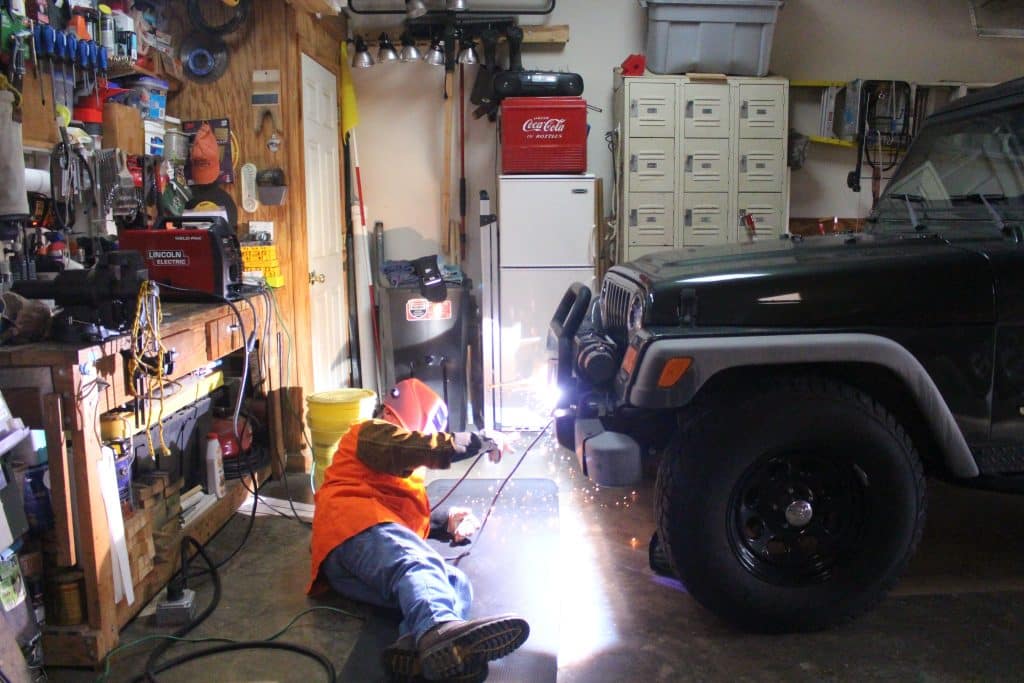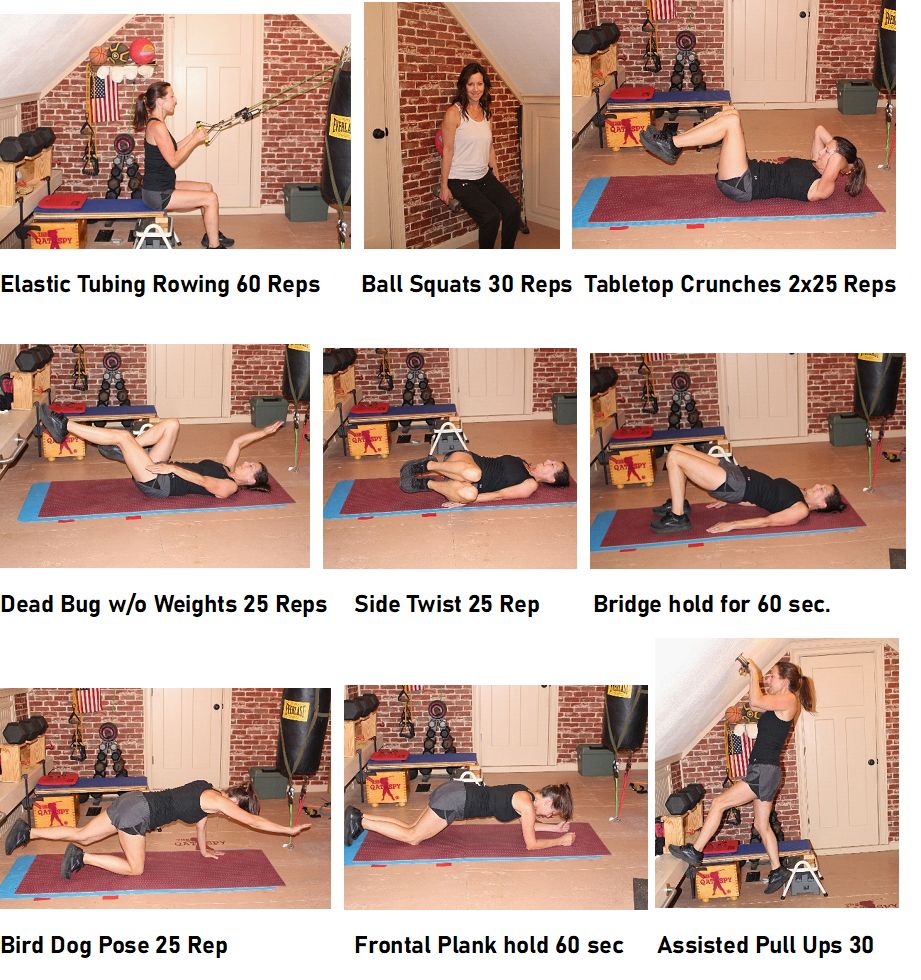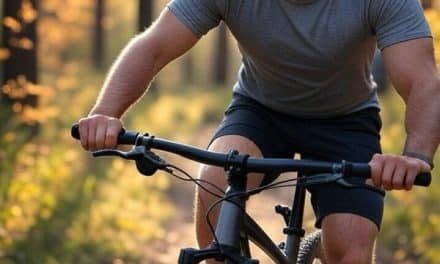In November of 2024 at age 66, I was diagnosed with Stage 2 Prostate Cancer that occurs in one in seven men. MEN, PLEASE GET YOUR PSA TEST DONE Annually for those over the age 40.
In February of 2025, I had a Prostatectomy (the removal of the Prostate) with treatment that followed where now I’m have been clear for over a year. I couldn’t work out for six weeks after surgery and I was taking Vitamin B-Complex to help with my recovery. These two conditions set up a perfect storm for my lower back issues that caused me to be discharged from the U.S. ARMY. This downtime weakened my core muscles and allowed me to develop back issues due to disc conditions.
My lower back issues manifested themselves if tight quads and calf muscles with numbness in my feet that for me was the worst of the three symptoms. The numbness caused me to have balance issues when I was on my feet for a long period of time. For someone that works in my welding shop, hangar, on my farm, and play golf, these symptoms were debilitating.

So, I started doing research and incorporating certain exercises particularly for the lower back into my warmup regimens. I had to discover and sort out the ones that worked from those that didn’t work and that actually made my back issues worse. I finally assembled nine (9) lower back exercises that are a part of my regular warmup regimen that I perform before my 60- minute workout sessions that I include strength training that I perform six times per week. I usually take one day per week off from my 60- minute workout, but still do my nine back exercises everyday.
If I didn’t follow these nine lower back exercises, I was looking at back surgery within the next 4- weeks in the middle of summer that included installing a rod and fusing together 3 of my lumbar disc. This is how much a dramatic impact these exercises had in my case. Even if these exercises allows me to be able to function without discomfort until this fall, it would have been the best option I had.
I had one of my female members of my gym come over to demonstrate these nine exercises in my gym that I have posted below, she is a great athlete and believes in MAHA as I do:

Note: Always consult a healthcare professional before starting a new exercise program, especially if you have existing health conditions. Consistency and proper form are key to maximizing these benefits.
Those with Back Issues Please see a Specialist and Follow these Suggestions:
Have a MIR Perform to determine the extent of your issues. Because Neuropathy, sciatic nerve, and disc issues have similar symptoms.
Watch your intake of Vitamin B-6 and B-12 high content of these can irritate your nerves. Sports drinks have high content of both B-6 and B-12. When I workout, I have to avoid these type drinks.
Try physical therapy like these exercises noted above that have relieved my symptoms. My suggestion is to follow period of exercises like I have noted before you pursue surgery options.
Eat a healthy diet and exercise with proper technique and consult a physicians before starting any exercise.
In Mississippi, I had the opportunity to have two highly trained medical groups help isolate my back issues:
Mississippi Neurology Care Clinic, Kaylon Lewis AMP-BC (601) 499-0282
NewSouth NeuroSpine Dr. Jack Moriarity, MD and Dr. Edwin Dodd, MD Lance Klein ACNP
(887) 554-4257
Open MIR of Mississippi (601) 487-8274
I have listed below the procedures and Benefits that I have followed for a proper therapeutic workout to eliminate 90- percent of these back issues that I had and that has allowed me to return to my hobbies and sporting activities that I enjoy foing:
Procedure & Benefits of the Nine (9) Lower Back Exercises:
1. Arm Rowing is a low-impact exercise that strengthens the upper back, shoulders, and core, helping to correct posture-related pain. Using resistance tubing (between 15 – 50 Lbs.) for this exercise that mimics a rowing motion, engaging the latissimus dorsi and rhomboids by rowing with the arms and forearms only parallel to the floor.
How to Perform: Sit or stand with a resistance band anchored in front of you in each hand. Pull the band toward your torso, squeezing your shoulder blades together. Slowly return to the starting position. Perform 3 sets of 5 reps. DO NOT bend at the hips or waist.
Benefits to Prevent Back Pain: Arm Rowing alleviated my upper back tension by strengthening the muscles that support the spine. It also improved my posture, reducing strain from slouching during long work hours or sitting. DO NOT bend at the hips or waist in performing the Arm Rowing just pull back on the resistance tubing.
2. Ball-Assisted Squats use a stability kick ball to support your lower back placed just above your glute muscles. The Ball-Assisted Squat engages your lower back, glutes, and core muscles. Guys and especially ladies that want great glutes and quads, this is a great exercise to perform not just to treat back issues but look great, especially for summer. In the featured image, I am 68 years old.
This exercise is ideal for those with lower back pain, as the ball reduces pressure on the spine.
How to Perform: Place a kick ball between your lower back and a wall just above your glutes and lower back to prevent the kick ball moving up your back while performing squats. Stand with feet shoulder-width apart, then slowly squat until your thighs are parallel to the ground or halfway down, keeping the ball against your back. Rise back up from the squat position. Do 3 sets of 10–12 reps.
Benefits for Back Pain: This exercise strengthened my glutes and core, which took pressure off my lower back. The ball provided stability, allowing me to focus on form without exacerbating discomfort.
If you use weights in each hand that I like to do, place a stool or sturdy box within arm reach where you can squat down to pick up without losing connection with the kick ball. I usually use two 35- Lbs. dumbbells in each hand and just do three-quarter squats. Do Not squat below legs being parallel to the floor. This avoids knee issues.
3. Crunches Tabletop Crunches target the abdominal muscles while minimizing strain on the lower back, making them a safe option for core strengthening instead of the typical sit ups. Strong AB muscles, strong back muscles!
How to Perform: Lie on your back with your legs in a tabletop position (knees bent at 90 degrees, shins parallel to the floor). Place your hands behind your head and lift your shoulders off the floor, engaging your core and abdominal muscles and hold for 3 seconds each crunch. Lower back down. Complete 3 sets of 15–20 reps. with a 20 second rest period between sets.
Benefits to Prevent Back Pain: By strengthening my core, Tabletop Crunches improved my spinal stability, reducing lower back pain caused by weak abdominal muscles that these crunches address. The controlled motion prevented over-extension of the lower back. These are my favorite exercises of the nine.
4. Dead Bug Exercises w/o hand weights are a gentle, core-focused movement that enhances coordination and stabilizes the spine, ideal for those with lower back issues.
How to Perform: Lie on your back with arms extended toward the ceiling and legs in a tabletop position. Slowly extend your right arm overhead and your left leg toward the floor, keeping your lower back pressed into the floor. Return to the starting position and switch sides, these are great for cognitive function as well. Perform 3 sets of 10 reps per side.
Benefits to Prevent Back Pain: Dead Bugs helped me build core strength without straining my back and improves my cognitive function that is essential as we age. We start losing cognitive function after our mid-30’s and accelerates after our 60’s. The slow, controlled movements has improved my lumbar stability, significantly reducing morning stiffness which is a huge problem for me personally. I opt to use two 10- Lbs. dumbbells in each hand performing the Dead Bug.
5. Side Twists, engage the obliques and improve spinal mobility, helping to alleviate tightness in the mid-back. Slow action is preferred and hold knees to floor for 3- seconds.
How to Perform: Lay on the floor with your back flat and knees bent and feet lifted slightly off the ground (or flat for beginners). Rotate your knees side to side, keeping your core engaged. Do 3 sets of 20 twists (10 per side).
Benefits to Prevent Back Pain: Side Twists increased my spinal flexibility and strengthened my obliques, which supported my mid-back. This exercise relieved the tightness that I feel from prolonged sitting. This is great for golfers to achieve flexibility.
By performing these nine lower back exercises with my normal workout, I am able to return to the golf course where I walk the course.
6. The Ab Bridge (or Glute Bridge) strengthens the glutes, hamstrings, and lower back, promoting proper pelvic alignment and reducing lower back strain.
How to Perform: Lie on your back with knees bent and feet flat on the floor, hip-width apart. Lift your hips toward the ceiling, squeezing your glutes and engaging your core. Hold for 3 seconds, then lower. Complete 3 sets of 12–15 reps.
Benefits Prevent Back Pain: Ab Bridges were a game-changer for my lower back pain. By activating my glutes, they reduced the load on my lumbar spine, alleviating discomfort during daily activities like walking or standing.
7. Bird Dog Exercises the Bird Dog Exercise is like a Warrior Pose 3, but on your hand and knee, the Bird Dog improves balance, core strength, and spinal stability, targeting both the lower and upper back. You will need to develop coordination as you perform the Bird Dog. It will take time to develop coordination. I prefer the Bird Dog to the Warrior Pose 3 for helping my back.
How to Perform: Start on all fours with a neutral spine parallel to the floor. Extend your right arm forward and left leg backward, keeping your hips level. Hold for 3 seconds, then return to the starting position. Switch sides. Do 3 sets of 10 reps per side.
Benefits to Prevent Back Pain: Bird Dogs strengthened my erector spinae and core muscles, which stabilized my spine. This exercise reduced my lower back soreness, especially after long periods of sitting. Writing sports articles and health and fitness article I sit for long periods.
8. The Frontal Plank is a full-body exercise that builds core endurance and strengthens the muscles supporting the spine, making it excellent for overall back health.
How to Perform: Lie face-down and prop yourself up on your forearms and knees, keeping your body in a straight line. Raise up your shoulder over your elbows to engage your core and hold for 20–seconds with each set, depending on your ability. Place a slight amount of tension on your toes to engage your lower back muscles.
A complete Plank is support with the toes instead of the knees rather then with a frontal plank. Perform 3 sets.
Benefits to Prevent Back Pain: Planks improved my core endurance, which alleviated pressure on my spine. They also helped correct my posture, reducing upper back pain from slouching.
9. Assisted Pull-Ups, using a grab bar, shown here, the Assisted Pull-Ups strengthen the upper back, lats, and shoulders, improving posture and reducing upper back discomfort. Assisted Pull-Ups decompresses the spine to improve function of the disc. The difference between a pull-up and a chin-up is in the chin up, the palms are toward you.
How to Perform: I use a grab bar in my gym that I built in 2019. I use the grab bar and place one foot on my bench in my case that I built to support my foot and equipment. Grip the bar with both hands shoulder-width apart, pull your chest toward the bar until your nose touches the bar, then lower slowly. Do 3 sets of 8–10 reps. Rest 20 seconds between sets.
Benefits to Prevent Back Pain: Assisted Pull-Ups strengthened my upper back muscles, which alleviated tension from poor posture and decompresses the discs. They also enhanced my shoulder stability, reducing strain on my upper spine. Engages the latissimus dorsi (lats), biceps brachii, and forearm muscles. They also engage the trapezius, rhomboids, teres major, posterior deltoids, and core muscles. Furthermore, pull-ups indirectly engage the pectoralis major, brachialis, and erector spinae.
Benefits & Recommendations of the 9 Lower Back Exercises:
The combination of core, glute, and back strengthening addressed the root causes of my discomfort—weak muscles and poor posture. Arm Rowing and Assisted Pull-Ups targeted my upper back, while Ball-Assisted Squats, Ab Bridge, and Bird Dog Exercises relieved lower back strain. Tabletop Crunches, Dead Bugs, Side Twists, and Frontal Planks fortified my core, providing spinal stability.Tips for Success:
- Start Slow: Begin with 1–2 sets and low resistance to avoid injury.
- Focus on Form: Proper technique is crucial to prevent aggravating back pain.
- Consult a Professional: If you have severe pain, consult a doctor or physical therapist before starting.
- Stay Consistent: Regular practice (3–4 times weekly) yields the best results.
- Incorporate Stretching: Pair these exercises with gentle stretches to improve flexibility.
You may have to tailor these 9 Lower Back exercises to your results by eliminating one or two due to your circumstance. As soon as I completed my first Lower Back exercises, I got relief and felt significantly better. I have cut down my symptoms by 90% where I only have 10% of these symptoms if I work excessively hard or work in a bending position for long duration. I at all possible get all your work in the WORK ZONE, between your waist and just below your shoulders. Avoid repetitive motion.
Above are my FOUR books that I recently released on Kindle that are available in E-Book or in Paperback.





